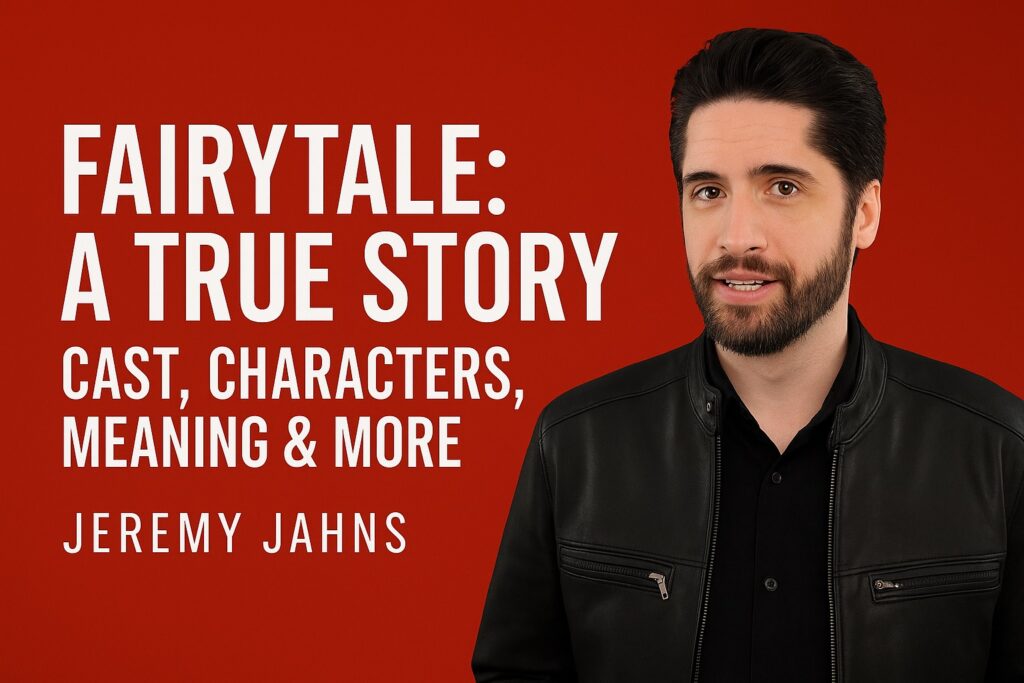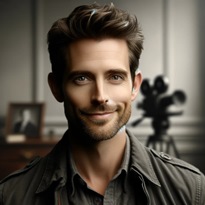
This wasn’t just some random fantasy flick. It was rooted in something that really did happen: the Cottingley Fairies, one of the most bizarre and charming hoaxes of the early 20th century. Two young cousins claimed they had photographed fairies at the bottom of their garden, and even Sir Arthur Conan Doyle, yep, the guy who created Sherlock Holmes, got tangled up in believing them. That true story gave this movie its backbone, but the way it was brought to the screen was equal parts enchanting and thought-provoking.
Let’s break down the film, the real story behind it, the cast, the themes, and why it still sparks curiosity today.
What Is Fairytale: A True Story About?
At its heart, Fairytale: A True Story is about belief. Set in post–World War I England, it follows two young girls, Frances Griffiths and her cousin Elsie Wright, who claim to have seen and even photographed fairies in their garden. At first, the adults laugh it off as a childish game. But when the photos catch the attention of Sir Arthur Conan Doyle and illusionist Harry Houdini, things spiral from a simple game into a cultural phenomenon.
The movie doesn’t just tell the story of two kids trying to convince adults of something magical. It digs into bigger ideas: faith versus skepticism, innocence versus cynicism, and how desperate people can be to find hope after devastating times like the Great War.
And that’s the kicker, the story feels light and whimsical, but underneath the glitter and fairy wings is a sobering reality. People wanted to believe. They needed to believe. And these girls gave them that.
The Cast and Characters – Who Brought the Magic to Life?
One of the things that makes Fairytale: A True Story work as more than just a kids’ fantasy is its cast. It doesn’t lean on cartoonish performances; it grounds the whimsy in real emotion.
Florence Hoath as Elsie Wright
She’s the older of the two cousins, more skeptical but also protective. Hoath brings a natural, no-nonsense energy that balances out the dreamier elements of the film.Elizabeth Earl as Frances Griffiths
Frances is the true believer, the one whose imagination seems boundless. Earl’s wide-eyed performance nails that childlike sense of wonder.Paul McGann as Arthur Wright (Elsie’s father)
A man caught between practicality and the tug of curiosity. McGann plays him with understated warmth.Phoebe Nicholls as Polly Wright (Elsie’s mother)
She’s supportive yet cautious, always balancing her daughter’s innocence with the weight of adult concerns.Harvey Keitel as Harry Houdini
Now, this is a standout casting choice. Houdini was a real skeptic, always out to debunk mysticism, and Keitel plays him with charm and authority. His scenes give the movie a pulse of grounded realism.Peter O’Toole as Sir Arthur Conan Doyle
Yep, Gandalf-level casting before The Lord of the Rings. O’Toole plays Doyle with a fascinating mix of dignity and desperation. Here’s a man who built the most logical detective in fiction, but who himself yearned for the spiritual world to be real.
That’s the beauty of the casting: it’s not about who’s right or wrong, but who needs to believe.
The True Story Behind the Fairies
Here’s where things get really interesting. The Cottingley Fairies weren’t just a bedtime story. In 1917, two girls in Cottingley, Yorkshire, Frances and Elsie, took photos that supposedly showed them playing with fairies. Remember, this was the early 1900s. Photography was still new, and photo manipulation wasn’t something the average person could pull off easily. So when the photos surfaced, they created a sensation.
Sir Arthur Conan Doyle, of all people, became one of the fairies’ biggest champions. He published articles defending the photos, saying they proved the existence of fairies and spiritual life. For a man who created the logical, rational Sherlock Holmes, that irony is hard to miss.
Of course, decades later, the cousins admitted that the fairies were paper cutouts. But even then, they insisted they did see real fairies at one point. So, was it all fake? Or was there a nugget of truth wrapped in make-believe? That ambiguity is exactly what the movie plays with.
Themes and Meaning – Why This Story Resonates
The movie isn’t just about whether fairies are real. It’s about why people want them to be real.
Innocence of Childhood: Kids live in a world where imagination doesn’t have boundaries. The film captures that purity beautifully.
Grief and Healing: After World War I, people were desperate for hope. The fairies gave them a story to cling to.
Belief vs. Skepticism: The tug-of-war between Doyle and Houdini represents two sides of human nature. One wants magic to be true. The other needs truth to stay unshaken.
The Power of Storytelling: Whether true or not, the fairy tale united people. Sometimes, the story itself matters more than the facts.
The Cinematic Style – Blending Magic with Reality
Director Charles Sturridge had the tricky task of making a film that lived between fact and fantasy. Go too whimsical, and it turns into a kiddie movie. Go too harshly realistic, and it loses its magic. What he pulled off instead was something closer to magical realism. The fairies appear just enough to make you wonder, but never so much that you’re 100% convinced.
The cinematography leans into misty forests, soft lighting, and that dreamy English countryside vibe. It almost feels like you’ve stepped into a painting. The visual effects, while dated by today’s standards, still hold a certain charm. They don’t overwhelm the story, they serve it.
And the pacing? It’s slow by blockbuster standards, but intentionally so. This isn’t about fast action. It’s about drawing you into a mystery that asks you to think as much as feel.
Is Fairytale: A True Story Really True?
Here’s the million-dollar question: is it true? The short answer, no, not in the way the movie portrays. The photos were staged, and the girls admitted that much later. But here’s the catch: people still argue over whether the girls saw something real at least once. And in that way, the film is true, not literally, but emotionally. It’s about the human need to believe in something more.
Where Can You Watch Fairytale: A True Story?
For a while, the film was hard to find. It’s not one of those movies that gets constant re-releases. But depending on your region, you can usually track it down on streaming platforms like Amazon Prime Video, Apple TV rentals, or DVD collections. As of now, it doesn’t sit on Netflix’s main catalog, but that could change, streaming rights are always in flux.
How Does It Compare to Other “True Story” Fairy Tales?
Movies like Finding Neverland (about J.M. Barrie and the creation of Peter Pan) or Miss Potter (about Beatrix Potter and Peter Rabbit) deal with similar themes. They take real people and real events but blend them with the whimsy of the stories those people created. Fairytale: A True Story stands out because it’s not about a writer inventing something, it’s about children and the blurry line between innocence and deception.
Why the Movie Still Matters
Even though it’s over two decades old, Fairytale: A True Story still feels relevant. In today’s world of fake news, viral TikTok hoaxes, and AI-generated images, the movie’s central question, why do we believe?, is more pressing than ever.
When Frances and Elsie staged their fairy photos, they weren’t trying to scam the world. They were just kids playing. But adults took that play and turned it into something huge. Doesn’t that sound exactly like the way rumors and internet myths explode today?
The film becomes a mirror. It asks us: are we Houdini, demanding proof? Or are we Doyle, clinging to belief because we need it?
Final Verdict – Is It Worth Watching?
If you’re expecting a fast-paced fantasy epic, this isn’t that. But if you want a thoughtful, beautifully shot film that makes you reflect on belief, innocence, and storytelling, then yes, it’s worth your time.
Jeremy Jahns style verdict? It’s one of those “good time, no alcohol required” kind of movies. Charming, heartfelt, and surprisingly deep for a family film.

I am Jeremy Jahns – Your Cinematic Explorer
Immerse in movie reviews, Hollywood insights, and behind-the-scenes stories.